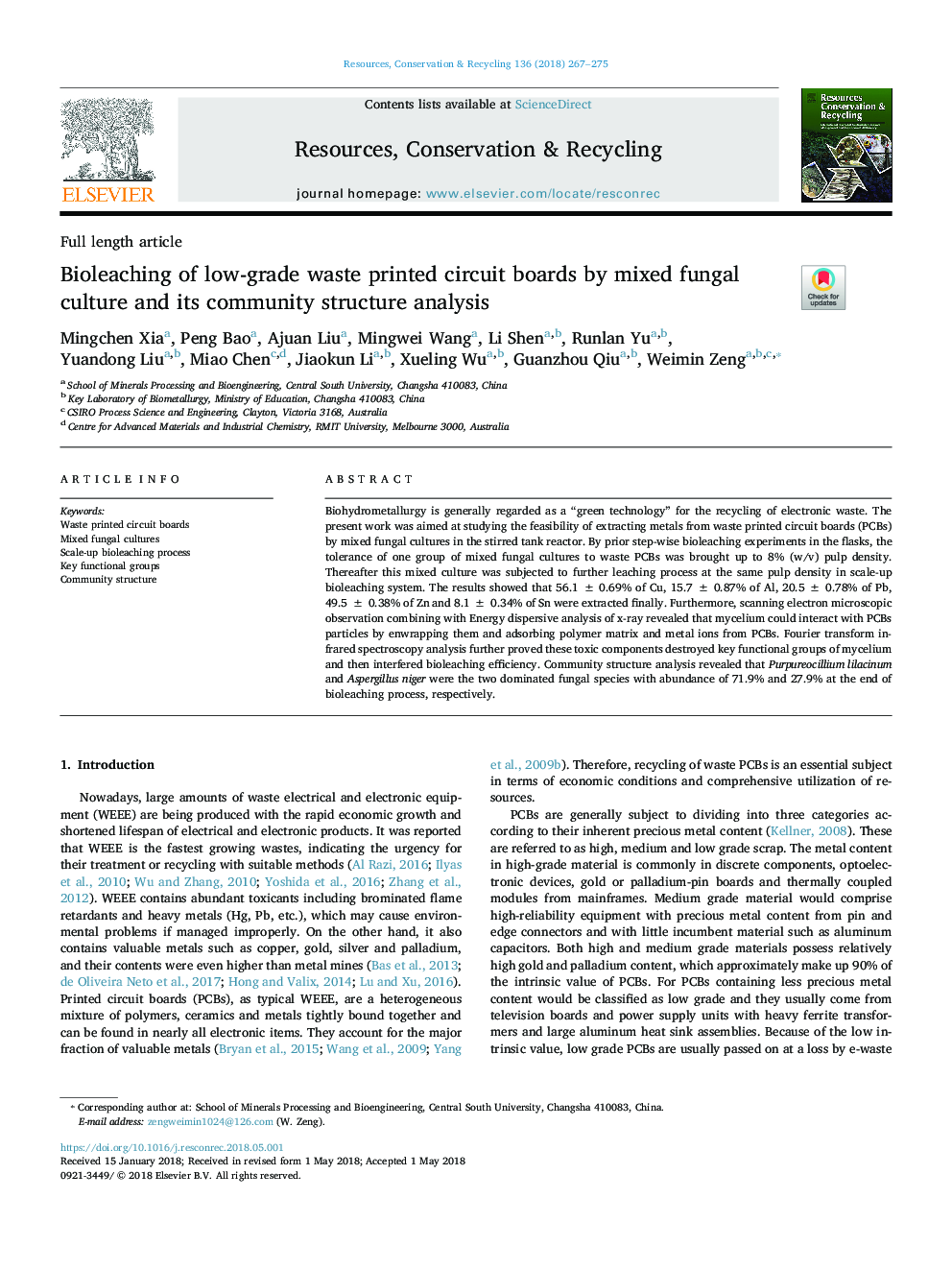| Article ID | Journal | Published Year | Pages | File Type |
|---|---|---|---|---|
| 7494052 | Resources, Conservation and Recycling | 2018 | 9 Pages |
Abstract
Biohydrometallurgy is generally regarded as a “green technology” for the recycling of electronic waste. The present work was aimed at studying the feasibility of extracting metals from waste printed circuit boards (PCBs) by mixed fungal cultures in the stirred tank reactor. By prior step-wise bioleaching experiments in the flasks, the tolerance of one group of mixed fungal cultures to waste PCBs was brought up to 8% (w/v) pulp density. Thereafter this mixed culture was subjected to further leaching process at the same pulp density in scale-up bioleaching system. The results showed that 56.1â¯Â±â¯0.69% of Cu, 15.7â¯Â±â¯0.87% of Al, 20.5â¯Â±â¯0.78% of Pb, 49.5â¯Â±â¯0.38% of Zn and 8.1â¯Â±â¯0.34% of Sn were extracted finally. Furthermore, scanning electron microscopic observation combining with Energy dispersive analysis of x-ray revealed that mycelium could interact with PCBs particles by enwrapping them and adsorbing polymer matrix and metal ions from PCBs. Fourier transform infrared spectroscopy analysis further proved these toxic components destroyed key functional groups of mycelium and then interfered bioleaching efficiency. Community structure analysis revealed that Purpureocillium lilacinum and Aspergillus niger were the two dominated fungal species with abundance of 71.9% and 27.9% at the end of bioleaching process, respectively.
Related Topics
Physical Sciences and Engineering
Energy
Renewable Energy, Sustainability and the Environment
Authors
Mingchen Xia, Peng Bao, Ajuan Liu, Mingwei Wang, Li Shen, Runlan Yu, Yuandong Liu, Miao Chen, Jiaokun Li, Xueling Wu, Guanzhou Qiu, Weimin Zeng,
